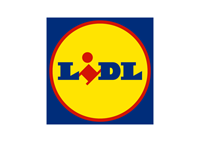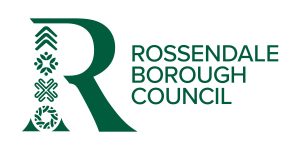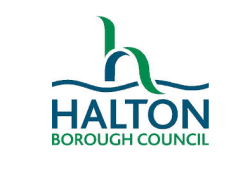
Land Remediation Relief (LRR)
LRR is a refund available for works undertaken to remove or contain contamination such as Japanese knotweed. We can help you get the right advice and possibly claim up to 20% of project costs.
If you answer yes to any of the following questions read on
- Are you a UK company that has bought a UK site that needs remediation?
- Has the site you have purchased had any prior industrial use?
- Have you demolished a building containing contaminated material?
- Have you undertaken remedial works?
- Do you own land that has been derelict since 1 April 1998 which you have brought back into productive use?
What is Land Remediation Relief (LRR)?
Land remediation relief (LRR) is a valuable tax relief originally introduced to incentivise companies to repurpose derelict land and buildings and bring it back into use.
It applies to expenditure on various activities carried out in doing so, including:
- Cleaning up land acquired from a third party that is in a contaminated state as a result of former industrial activity
- Containment or removal of natural contaminants, such as Japanese knotweed arsenic, radon and Asbestos removal
- Removing harmful buried structures
- Removal of contaminated soil or water
- Treatment of harmful organisms
- Capping or adding protective barriers/layers to land
Who can claim and what for?
To qualify for LRR, you must be a UK tax payer and the money must be (or have been) spent on the remediation of the land such as:
- Excavation works.
- Surveys.
- Soil/groundwater treatment to scope out remediation process.
- Removal of asbestos from land or buildings.
- Breaking-out buried structures.
- Staff wages & employers NIC where more than 20% of employee time is spent on the remediation works.
- Sub-contractor costs.
- Materials directly employed in the remediation.
- Payments to sub-contractors directly engaged in the remediation.
Claims can be made on developments, regeneration projects, fit-outs and refurbishments.
GET STARTED:
We have partnered with a leading firm of Property & Business Tax Specialists to ensure you get the best advice and assistance with making a Land Remediation Relief claim. Complete the form below and we will be in touch, or read on for more information.
the benefits
For property investors/owner occupiers: 150% of the qualifying LRR provides a tax saving of £37.500 for every £100 spent on qualifying land remediation
For developers: An extra 50% deduction (in addition to the usual 100% revenue deduction available). This provides an additional tax saving of £12.50 for every £100 spent on qualifying land remediation.
EXAMPLE CLAIM:
- Client incurred £1.3m on a development, including on ground works
- The accountant didn’t identify any LRR however on reviewing the main contractor information it was realised that the client had undertaken remediation works
- Identified LRR of c.£330k and LRR tax credit of c.£79k will be claimed by the company
WHAT IS CONTAMINATED LAND?
Land or buildings become contaminated as a result of previous industrial activities that deem the contamination as harmful, or there is a serious risk that it could cause harm such as pollution of groundwater, streams, rivers or coastal waters. Many derelict buildings contain Asbestos which leaks into the ground when the building is brought down. Examples being:
- Japanese knotweed.
- Asbestos.
- Radon.
- Buried structures and redundant services.
- Harmful organisms.
Derelict land is out of productive use, and incapable of being brought back into productive use unless buildings or structures on it are removed. The site must have been derelict on or before 1 April 1998 (e.g. listed on English National Land Use Database).
Why is LRR so important for developers?
Today, there are fewer greenfield sites available for development due to increased planning restrictions and reduced site availability, so developers are increasingly having to consider the potentially more challenging brownfield sites; many of which might have contamination and/or dereliction issues.
Regeneration and development of these sites comes at a cost, which is why claiming LRR is a vital consideration. But sadly, too many companies are either unaware of LRR or view it as additional paperwork that is not worthwhile. Plus, many firms’ accountants simply do not know enough about it in order to either recommend or process a tax claim. We can help.
qualifying conditions
Common examples of qualifying contamination and measures to remove or mitigate the risks include:
- Asbestos e.g. roofing panels – complete removal or capping / encapsulating qualifies
- Sulphate contamination in soil and concrete
- Hydrocarbon contamination e.g. fuels, oils etc. or dealing with disused tanks
- Any pollution from previous industrial activity e.g. heavy metal contaminants from industrial processes
- Ground / landfill gases – any protection measures e.g. membranes / ventilation systems required in buildings or foundations
- Japanese knotweed infestation
- Radon protection measures
- Arsenic contaminants found in soils
- Removal of redundant utility services and concrete foundations on sites or part of sites derelict since April 1998
Historical claims
For capital expenditure (owner occupiers and investors) – must submit an election to claim land remediation relief to HMRC within 2 years from end of accounting period works were undertaken
For revenue expenditure (developers) – 50% additional relief given when qualifying expenditure is charged to the profit and loss account. This can be claimed anytime within the general time limits for claims under Corporation Tax Self-Assessment (i.e. 4 years).
are there any Restrictions?
The only conditions are that a company or business is not entitled to claim where any of the following applies:
- The land is in a contaminated state due to the claimant company.
- The claimant company does not have a ‘major interest’ (freehold or a minimum lease of 7 years).
- The expenditure has been subsidised, for example by grant funding.
- The acquisition cost of the land was specifically discounted in order to account for the cost of remediation works and stated as such in the purchase agreement.






































